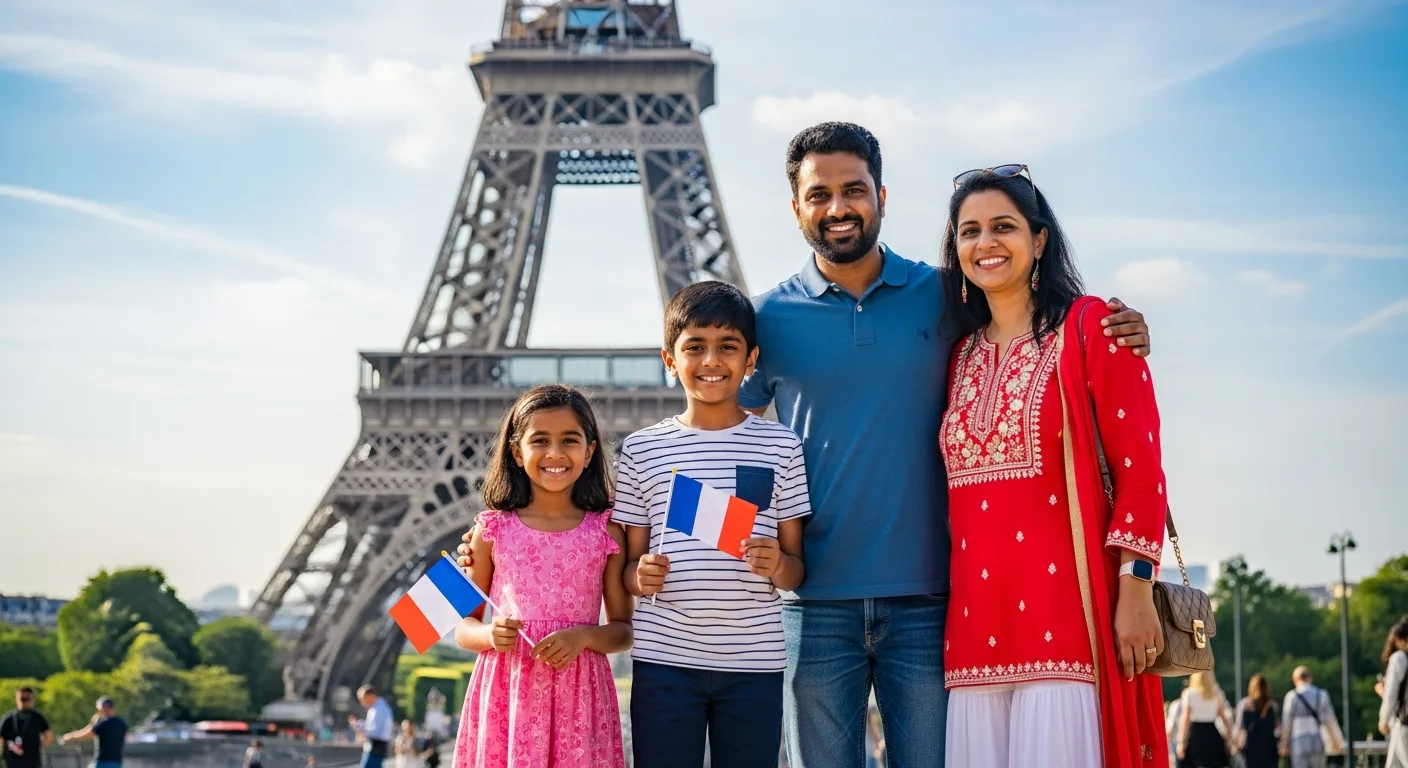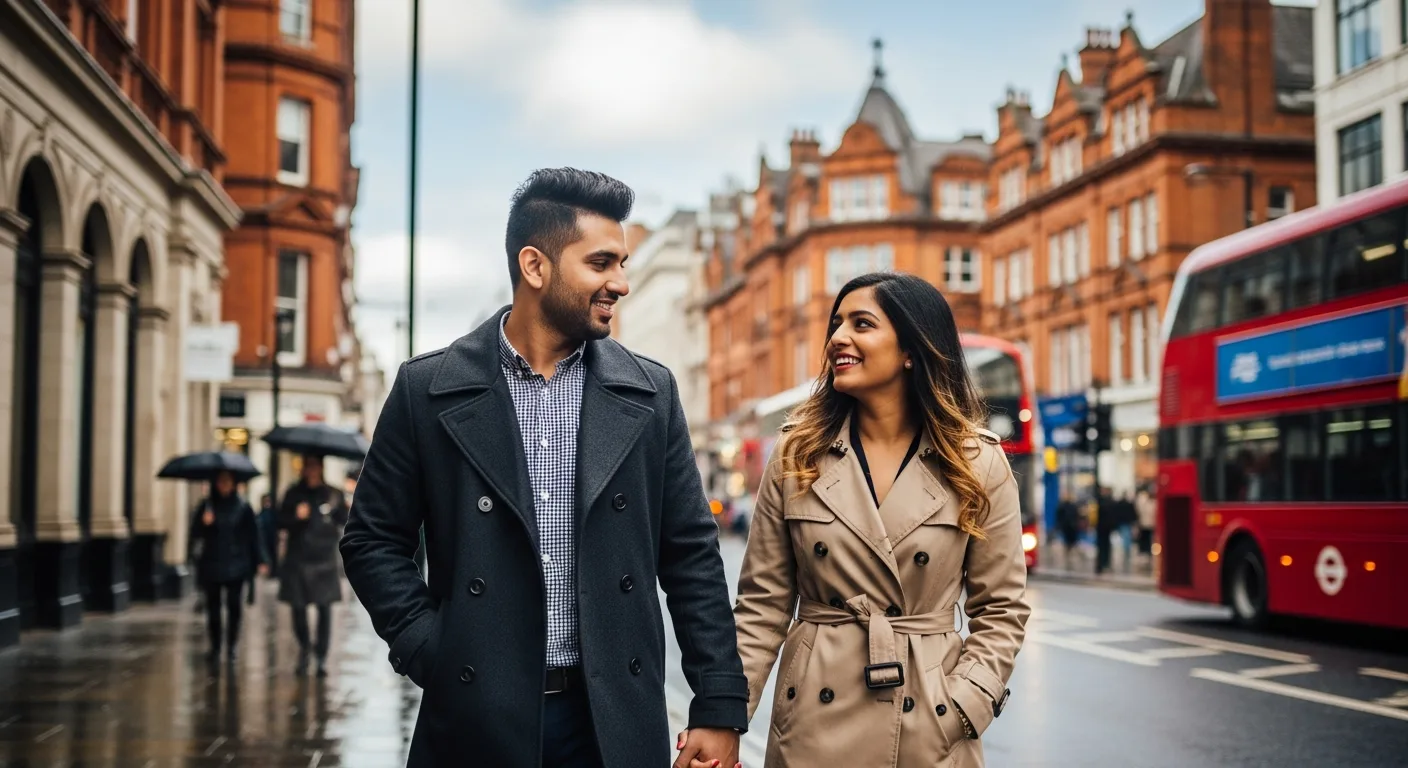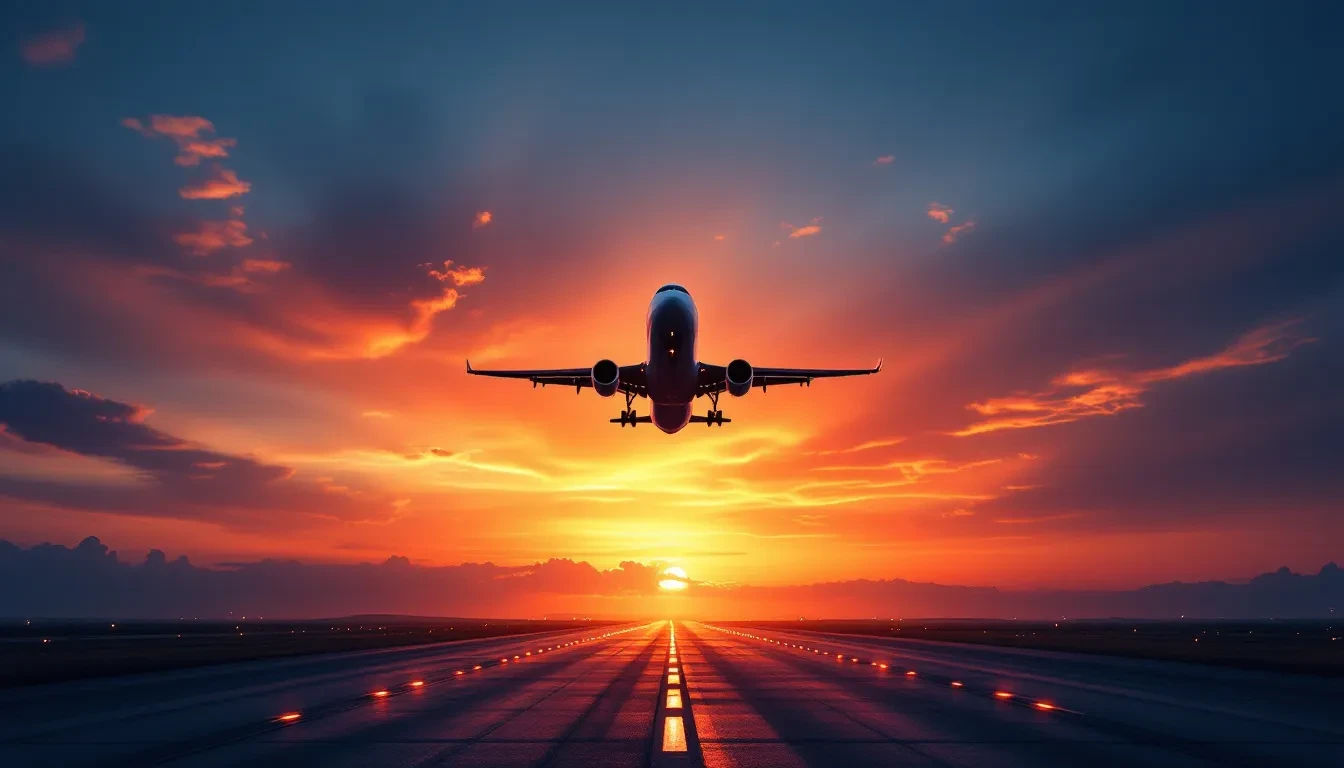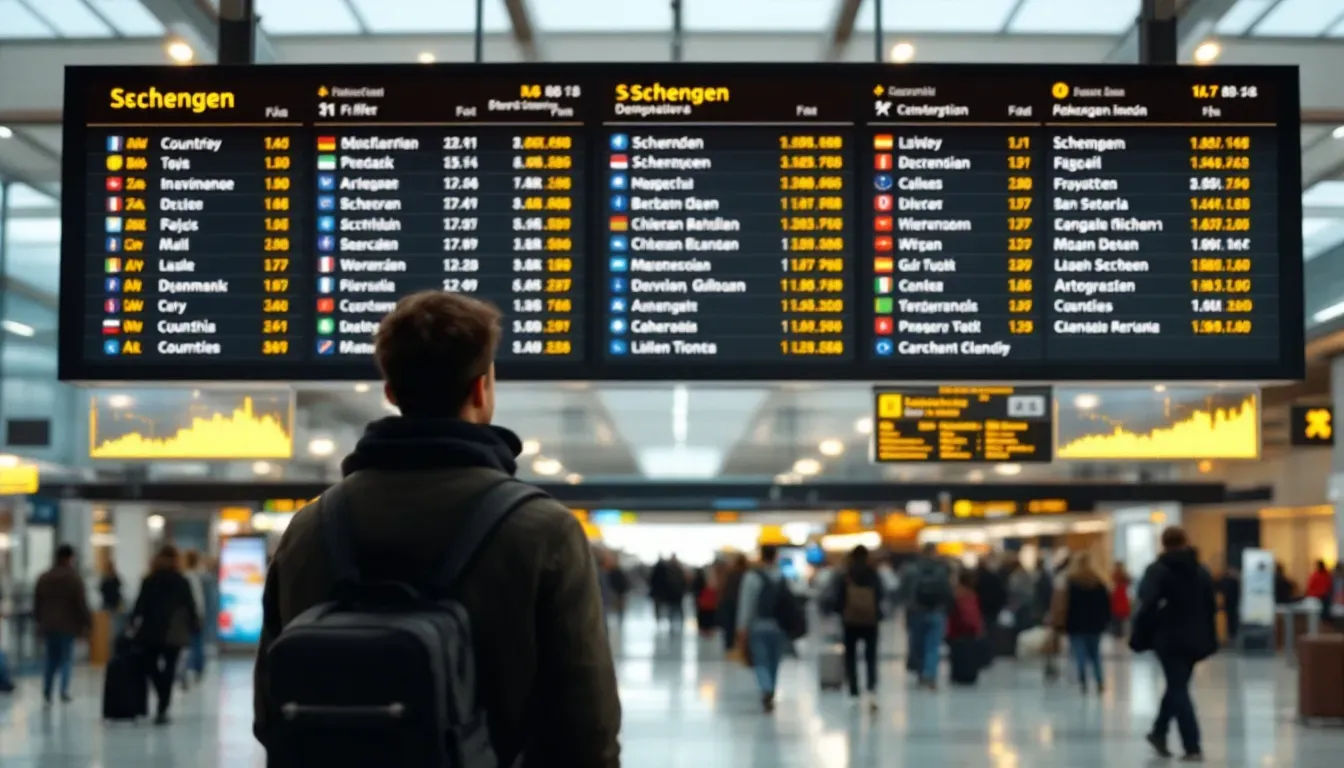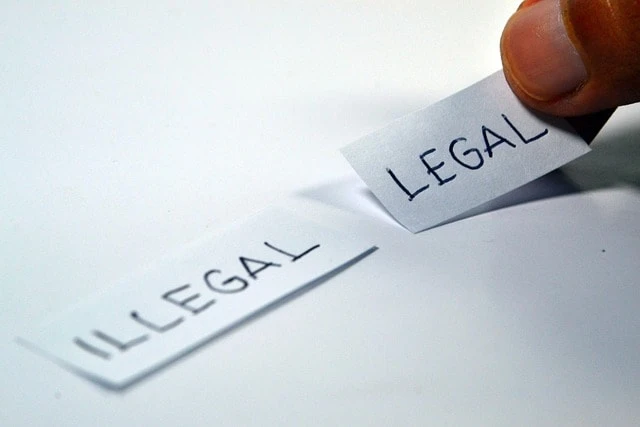Do You Need A Dummy Ticket For a US Fiance Visa?
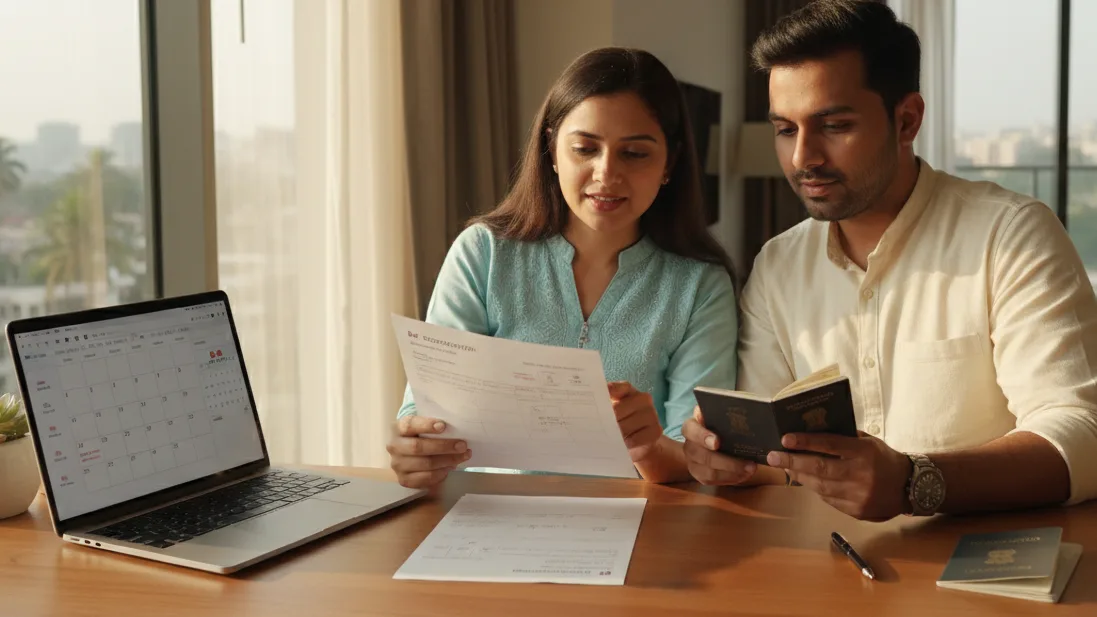
Dummy Ticket for US Fiancé Visa: Do You Really Need One for the Interview?
You are planning a K-1 interview, the wedding spreadsheets are open, and one question keeps popping up: Do you really need a flight reservation? For most applicants, the answer is no. There is no universal rule that forces you to show a ticket. Requirements vary by post, and officers in Mumbai often focus more on relationship evidence than on travel bookings. A dummy ticket from a trusted provider like DummyFlights.com can offer verifiable proof if needed, ensuring your application stays flexible.
Still, a smart reservation can help. It signals that your arrival fits the 90-day marriage window, that your dates make sense with passport return times, and that you are not gambling on a non-refundable fare before the visa is printed. For more details on visa preparation, check our FAQ or explore tips in our blogs. In this guide, we show exactly when a reservation strengthens your case, the kind that works, how to time or refresh it, and what to carry if you prefer alternatives. Ready for your interview? Start your dummy ticket booking now. Learn about our team's expertise on the About Us page.
No — a dummy ticket or paid flight booking is not mandatory for a U.S. Fiancé (K1) Visa, but submitting a verifiable flight reservation can make your application appear more organized, credible, and interview-ready. Consular officers often appreciate seeing clear, realistic travel plans when reviewing your DS-160, I-129F approval, and supporting documents. A dummy ticket with a real PNR from DummyFlights.com provides embassy-accepted proof of intended travel without the financial risk of buying a non-refundable ticket before approval.
Last updated: November 2025 — aligned with current U.S. Embassy and K1 visa documentation requirements.
Whether you're navigating the complexities of the K-1 process or simply seeking clarity on travel documentation, understanding the role of a dummy ticket can make all the difference. It's not just about having a booking—it's about demonstrating intent and preparedness in a way that aligns with U.S. immigration expectations. As you prepare, remember that resources like our blogs offer deeper insights into visa-related travel strategies.
Are Flight Reservations Needed For A US Fiance Visa Interview?
You want a smooth interview and a fast visa pickup. A flight reservation feels like the last missing piece. Before you book anything, let’s map the real expectations and how they play out for applicants in India. Need a verifiable itinerary today? Book a dummy ticket in minutes.
The Short Answer For India-Based Applicants
There is no universal rule that requires a flight reservation for a K-1 interview. Some U.S. posts accept a simple statement of intended travel. Others never ask about flights at all. In India, most K-1 interviews happen in Mumbai, where officers focus on relationship evidence and overall credibility.
A reservation can still help. It shows you understand the 90-day entry and marriage rule. It proves your timeline is realistic. It also lets you avoid non-refundable purchases until the visa is printed in your passport. For official guidance, refer to the U.S. Department of State.
Why Carrying A Reservation Still Makes Sense
A good reservation works like a timeline anchor. It turns your plan into something officers can quickly assess.
- It shows you will arrive within a practical window to marry within 90 days of entry.
- It aligns with your wedding plans, courthouse availability, and family schedules in India and the U.S.
- It helps you manage risk. You keep flexibility while you wait for your passport return.
- It signals that you have thought through the route to the petitioner’s city, not just picked a random destination.
Keep it simple. One way to the petitioner’s city or nearest hub. Dates that respect processing time. Name exactly as in your passport. To expand on visa timelines, visit our FAQ.
Moments When Officers Tend To Ask
Officers do not always ask for a reservation. When they do, it is usually to test feasibility.
- Your DS-160 shows an intended arrival that is too close to the interview date.
- Your wedding calendar looks too tight to meet the 90-day rule.
- Your documents mention multiple date ranges that conflict.
- You propose an unusual itinerary with odd connections or long detours.
- Your plan depends on immediate travel during a known peak season without buffers.
If your dates make sense and your story is consistent, many interviews finish without any flight discussion.
What Mumbai Officers Usually Care About
Think of Mumbai as practical and evidence-led. The officer wants to see that your relationship is genuine and that your plan is workable.
- Processing buffers. Visa printing and courier return take time. Your reservation should not be for tomorrow.
- Realistic routing. For a petitioner near a major hub, fly into that hub. For smaller U.S. cities, route through a logical gateway.
- Festival timing. Diwali, peak wedding months, and exam seasons can disrupt plans. Choose dates that look sane for travel and family events.
- Name accuracy. Indian passports often include middle names. Ensure perfect name matching on the reservation.
You win points by looking prepared, not by locking money into a ticket.
Reading The 90-Day Clock: The Practical Way
Your first lawful entry on the K-1 starts the 90-day marriage clock. Officers want to see that you can marry in that period without chaos.
Create a simple, believable timeline:
- Medical and interview completed.
- Any administrative processing, if applicable.
- Visa printing and passport return through the courier.
- A travel window that leaves a comfortable margin to marry well within 90 days.
If your wedding is complex, consider a civil ceremony soon after arrival and traditional functions later. Carry brief confirmations to show this plan is intentional and achievable. Our About Us page highlights how we've helped thousands with similar planning.
Red Flags You Can Avoid Upfront
You do not need a perfect itinerary. You do need a coherent one. Avoid these common issues:
- Round-trip trips that return after 90 days. A one-way is more logical for a K-1.
- Destination mismatch. Flying into a city unrelated to the petitioner without a clear reason.
- Ultra-tight dates. Booking travel too close to interview week or during known courier delays.
- Name mismatch. Any difference between the reservation and the passport can derail credibility.
- Unrealistic layovers. Connections that look impossible or rely on overnight terminal hops you cannot complete.
If you are unsure, pick a conservative arrival window. It looks mature and reduces questions.
How A Reservation Supports Your Bigger Story
A reservation is one piece of a larger picture. It should back up, not contradict, your other documents.
- DS-160. Your intended arrival is an estimate. Keep the reservation within a reasonable range of that date or bring a one-line explanation.
- Employment letters in India. Notice periods often run 30 to 90 days. If your HR letter shows a last working day on 30 June, avoid a 1 July departure without context.
- Accommodation in the U.S.: If you list the petitioner’s address, route to the nearest major airport for that address.
- Wedding logistics. Courthouse slot emails, venue holds, or family travel plans should match your arrival concept.
When everything points in the same direction, you look organized and credible.
If You Prefer Not To Carry A Reservation
You can still present a clear plan without any hold.
- Fully refundable tickets. High upfront cost, but easy to cancel after visa issuance. Read the fare rules closely.
- Written itinerary. A short note with a target week, likely airlines, and a practical route. Pair it with a courthouse pre-booking email or a simple wedding plan outline.
- Seasonal awareness. Acknowledge peak periods and show that you have backup weeks if printing or courier timelines slip.
Officers understand that travel is fluid until the visa is in your passport.
You are not required to show a flight reservation. Many applicants are approved without one. Still, a clean, verifiable reservation can make the conversation faster and easier. It proves your timing respects the 90-day rule. It matches your DS-160, your employment exit, and your early wedding steps. It keeps your money safe until you actually receive the visa.
Choose clarity over commitment. Keep the route sensible, the name exact, and the dates believable. If an officer asks, you will have a simple, confident answer ready.
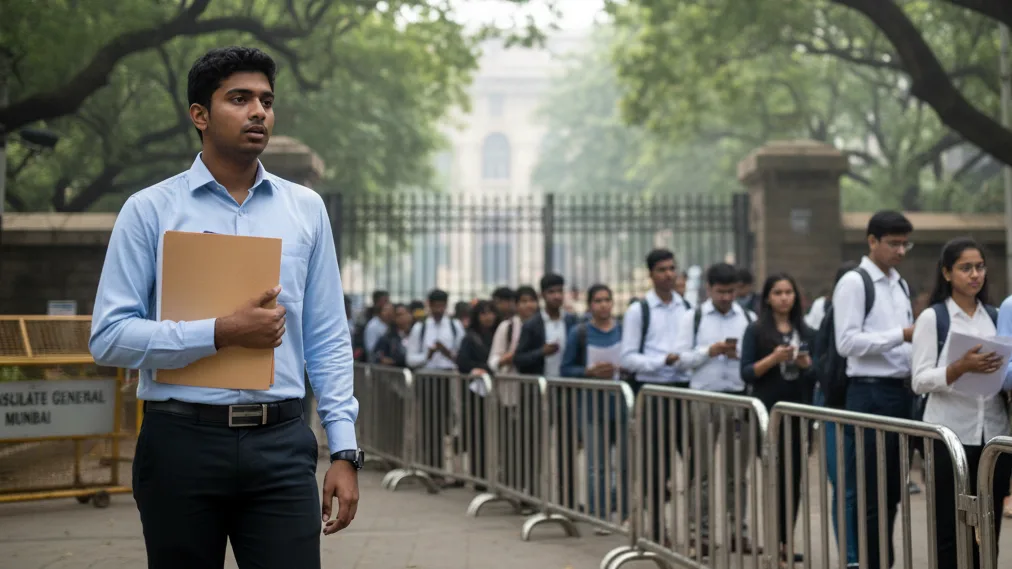
Make Your Reservation Work For You, Not Against You
You want proof of intent without risking cash. You also want dates that feel believable to a Mumbai officer who sees hundreds of K-1s. Here is how to use a reservation the smart way, so it strengthens your file and keeps you flexible. Keep plans flexible—secure your dummy ticket booking without buying a full fare.
Start With The 90-Day Reality, Then Build Backwards
Treat the 90-day marriage rule as the anchor. Plan your steps in reverse from your ideal civil ceremony date.
- Pick a civil ceremony window within 3 to 5 weeks of arrival.
- Work backward to choose an arrival week that gives breathing room for settling in and last-minute errands.
- Keep a second option for the ceremony a week later. This shows you can adapt if the passport comes back late.
Students and first-timers often forget buffers. Add at least 5 to 10 days of spare time. It makes your story feel real. For student-specific advice, see our blogs.
Align With Visa Printing And Passport Return Timelines
A clean reservation respects the part you cannot control. That means printing queues and courier delivery.
- Check your medical completion date and interview date.
- Add time for any 221(g) document requests if you think they might apply to you.
- Set the reservation after the usual passport return window.
- If your interview is just before a public holiday or festival, push the travel date a bit further to be safe.
You do not need insider knowledge. You need common sense. Officers notice when you plan responsibly.
Keep The Itinerary For Fiancé(e) Visa Simple And Direct
Complex routings create questions you do not need.
- One way to the petitioner’s nearest logical airport.
- Avoid novelty routes that add three long layovers.
- If the petitioner lives in a smaller city, arrive at the nearest hub and show a short onward domestic plan.
Digital nomads and remote workers sometimes propose long multi-stop journeys. Save the experiments for later trips. For the K-1, go simple.
Choose Dates That Respect Your Life In India
Your reservation should match the rest of your paperwork. That includes your job, your studies, and your family obligations.
- If your employer's letter shows a 60-day notice, do not schedule departure in 30.
- If you are a student, check the exam and results calendars. Avoid dates that overlap with finals or convocations.
- If your family plans a ceremony in India before you fly, leave a gap for rest and packing.
A believable timeline is easier to defend. It also lowers stress when real life shifts.
Give Yourself Two Windows, Not One
One date can fail. Two windows tell a calmer story.
- Window A: Your preferred week.
- Window B: A backup week seven to fourteen days later.
- Keep both windows consistent with the DS-160 intention. Prepare a one-liner to explain that the reservation will shift to the later window if printing is slow.
Interview rooms reward flexibility. You look prepared, not rigid.
Use A Short, Honest Script If Asked About Dates
You do not need a long speech. You need clarity.
- “Our dates are tentative until the visa is printed. This reservation fits the 90-day rule and our courthouse availability.”
- “If courier delivery runs late, we will move the booking to the following week.”
- “The itinerary routes to the closest hub to the petitioner’s address.”
Practice this once. Deliver it calmly. Move on.
Set A Sensible Budget And Mention It Briefly
You may be asked how you will fund your first journey and setup. Keep it straightforward.
- Estimate domestic travel to your international gateway in India.
- Add the one-way international fare range for your season.
- Add a basic arrival budget for the first two weeks.
- Keep PDFs or screenshots that support your estimates.
Students and fresh graduates can mention an approved sponsor transfer or personal savings. Parents and family visitors can mention simple support plans. No drama. Just numbers.
Make The Reservation Match Your Name And Documents
Every letter matters.
- Use the exact legal name as printed on your passport.
- Check the order of given names and surnames.
- Verify the date of birth format on the reservation.
- If you recently renewed your passport, ensure the reservation uses the new number.
A name mismatch is a small mistake that creates big questions. Avoid it.
Plan For Peak Seasons Without Overpromising
India has busy travel waves. Prices and availability move fast. Officers know this.
- If you aim for Diwali or peak wedding season, show two feasible weeks and a realistic routing.
- If fares spike, say that you will adjust by two or three days to keep costs sensible.
- Keep a screenshot of sample fares from well-known airlines. Do not quote the absolute lowest. Quote a believable mid-range.
This shows you are practical and cost-aware.
Build A Light Paper Trail That Supports Your Plan
Your reservation should not stand alone. Pair it with simple, credible proofs.
- Courthouse availability emails or online appointment snapshots.
- A short note from the petitioner confirming accommodation and local transport after arrival.
- A one-page wedding plan outline if you intend to do a civil ceremony first and cultural events later.
Keep these in a clean folder. Officers appreciate neat files that answer questions fast.
Special Cases: Students, First-Timers, Family Visitors, Nomads
Different profiles face different questions. Tweak your reservation story accordingly.
- Students. Sync with academic dates. If you are between semesters, show how a mid-month arrival still lets you settle before orientation or start dates.
- First-time international travelers. Keep routing very simple. Pick familiar hubs and standard layovers. Carry a small checklist for arrival formalities.
- Family visitors turned K-1 applicants. If you previously visited on a B1/B2, ensure your K-1 arrival plan does not conflict with earlier commitments.
- Digital nomads. State clearly that the K-1 entry will be direct to the petitioner’s city. Future travel will follow after marriage and status adjustment.
You do not need a new strategy. You need the same strategy tailored to your circumstances.
Have A Refresh Plan Before The Hold Expires
Reservations expire. Plan the refresh so you are never empty-handed.
- Note the validity date on the PDF.
- Set a reminder two days earlier to issue a fresh hold for the same route and a nearby date.
- Keep the old and new PDFs together to show continuity.
- If availability changes, choose a comparable routing. Do not switch to an odd itinerary just to keep the price low.
Your goal is stability. Small shifts look normal. Wild changes do not.
Prepare Answers For Common “What Ifs”
Officers test for practicality. Be ready.
- What if the passport returns late? You will move to the next window.
- What if your employer extends notice? You will push the date and carry the updated HR email.
- What if you change the arrival airport? You will select the nearest hub to the petitioner and keep the domestic hop short.
Short answers show control. Long stories suggest uncertainty.
The Payoff: Credibility Without Cost
A thoughtful reservation proves intent while keeping your wallet safe. It respects the 90-day rule, it matches your Indian commitments, and it demonstrates real planning. You stay ready to fly as soon as the visa is printed. Most importantly, your file reads as calm, consistent, and complete. That is the kind of story officers trust. 👉 Order your dummy ticket today to ensure seamless alignment.

What A ‘Good’ Reservation Looks Like & How To Time It
You want a reservation that supports your story, not one that creates new questions. Build it to match your documents, your timing, and the realities of travel from India. Running out of time before the biometrics or the interview? Book a dummy ticket instantly.
The “Acceptable Reservation” Checklist
A strong reservation feels real and is easy to verify. Aim for the following.
- Verifiable PNR that loads in the airline system.
- Passenger name exactly as in your passport. No initials. No missing middle names.
- One-way routing to the petitioner’s city or the most logical hub. Keep connections sensible.
- Dates that line up with your case status and the 90-day rule after arrival on a K-1 visa.
- A clean PDF with booking time stamp, airline locator, and route.
This is not about showing off. It is about helping a consular officer see that your plan is workable for a visa interview. Keep it simple and consistent with the rest of your file.
You can also reference travel intent in your us fiancée visa journey without paying for a real ticket now. That keeps the risk low while you wait for the passport with a visa.
Timing Your Hold Like A Pro
Your reservation should respect the processing that happens after the visa applicant’s interview.
- Place the first hold close to the interview, but not so close that it expires before you meet the officer.
- Assume a buffer for printing, courier return, and any 221(g) requests.
- If your online non-immigrant visa application shows a very early intended arrival, shift the reservation a little later and prepare one line explaining the change.
- Avoid public holidays and peak festival weeks where courier timelines stretch.
Remember that K visa applicants are assessed on overall credibility. A believable arrival week is better than an exact day you cannot meet.
If you are coordinating with a citizen sponsor who is managing venue or courthouse slots, pick a realistic window. Officers appreciate that you planned around real-world constraints, not wishful thinking.
Refreshing Or Extending An Expiring Hold
Holds end. Plan how you will refresh without changing your story.
- Track the validity date printed on the PDF and set a reminder two days before it ends.
- Reissue the same route for the next feasible week.
- Keep the old and new files together so you can show continuity if asked.
- If the airline changes schedules, choose a comparable routing. Do not jump to a convoluted path just to retain a lower fare.
If government fees or scheduling push your timeline, a refresh shows that you remain flexible while staying within the 90-day window.
Documentation Polish For Interview Day
Your reservation should sit neatly with your required documentation. Bring only what adds clarity.
- Reservation PDF plus a quick PNR screenshot.
- DS-160 confirmation page.
- Form I-129F receipt and interview appointment printouts.
- Original documents such as a passport, a birth certificate, and a police certificate.
- Proofs that your relationship is bona fide and that you are legally free to marry, including details about previous marriages that are legally terminated or a death certificate if applicable.
- Financial support evidence from a us citizen petitioner that meets income requirements.
At the window, answer briefly. You are demonstrating readiness, not trying to overwhelm the officer.
Use DummyFlights.com When You Need A Verifiable Reservation Fast
Some applicants want a reservation they can verify immediately without buying a real ticket. At this point, you can use a provider like DummyFlights.com that issues live, checkable PNRs suitable for interviews. Reliable dummy ticket providers book you with major airlines like Air India, Emirates, Qatar Airways, or United, and the PDF arrives fast so you can bring it to the consulate. With this approach, you stay flexible while your case moves and avoid committing funds before the visa is printed.
Common Mistakes To Avoid
Small errors can derail an otherwise strong file. Avoid these issues.
- Name mismatch between the reservation and the passport.
- Round-trip trips that return after the 90-day marriage window.
- Routing to a city unrelated to your citizen partner without a good reason.
- Unrealistic layovers or marathon detours that do not reflect real travel from India.
- Dates that clash with your employer's notice period or university exams.
- Submitting fraudulent documents to back a timeline. Never do this.
If you must explain a change, keep it short. Officers value clarity over drama.
Keep Your Reservation Aligned With Your File
Your travel plan should harmonize with every part of your case.
- The visa application and the interview date should point toward the same arrival month.
- If your national visa center communication shows a later handover, allow more time before travel.
- If you will adjust your status after marriage, plan an arrival that lets you settle and prepare the filing calmly.
- If you are a green card holder’s foreign spouse converting later, remember that immigrant visa rules differ from a non-immigrant visa like the K-1. Keep your plan specific to K visas.
Mentioning that you will register for permanent residence after marriage is fine. Do not confuse lawful permanent resident status with the fiancé process. Different paths. Different requirements.
India-Specific Practicalities That Impress
Officers see many Indian cases. Show that you understand the local realities.
- Respect exam seasons, Diwali, and peak shaadi weeks. Prices rise and availability drops.
- Build in a cushion after your medical examination in case the panel clinic needs a repeat test.
- Keep your flight itineraries conservative if you live far from your departure hub.
- Check domestic connections like Ranchi to Delhi or Kochi to Mumbai that feed into your outbound flight.
If you have eligible children traveling later, note that their plans will align with your timeline. This shows foresight. For family visa tips, browse our blogs.
Consistency With Security And Integrity Rules
Your file should reflect clean intent and compliance.
- Never present a reservation as a paid ticket if it is not.
- Avoid any hint of marriage fraud. Keep your evidence strong and honest.
- Be ready to answer basic security questions. Do not joke about drug trafficking or anything that alarms border protection.
- Upon arrival, a CBP officer can ask about your first week in the United States. Keep a simple plan.
You want the journey to feel predictable from the consulate to the airport to the petitioner’s home.
Where These Pieces Fit In The Bigger Picture
Think of your reservation as a supporting player in a wider cast.
- Homeland security reviews, immigration services processing, and the waiver process for rare cases sit outside this document.
- The petition for an alien fiancé ties your story together.
- Some applicants ask if they must pay the visa application fee before booking a hold. Pay fees as required by the process. Keep receipts.
- Bring original documents to reduce back-and-forth.
- Keep space for cultural traditions after the civil registration. That keeps both you and your citizen spouse happy and on schedule.
For many Indian applicants, the goal is a marriage green card later. Your reservation now should make that next step easier.
Final Pre-Interview Checks
Do a short review the night before.
- Carefully review names, dates, and routing.
- Confirm that your medical exam is complete.
- Ensure your police certificates are in the folder.
- Verify that your case status matches the travel window.
- Make sure your plan would still look reasonable to a permanent resident or green card holder reading it as a neutral observer.
Walk in calmly. Speak clearly. Your reservation supports your story, proves intent, and helps you move from visa applicant to spouse in a steady, credible way.

Keep Every Date Singing The Same Tune: Consistency, Alternatives, And Calm Fixes
You have your plan, your evidence, and maybe a reservation. Now you need everything to tell one story. Consistency is what keeps the interview straightforward and stress-free. Make your file complete with a live PNR—finish your dummy ticket booking today.
Make Your DS-160 And Reservation Agree In Spirit
Your DS-160 asks for an intended arrival. It is an estimate, not a promise.
- Keep your reservation in the same general month as the DS-160 entry.
- If you shifted dates to allow for printing or courier delays, prepare one sentence that explains the change.
- Print the updated itinerary and carry the original DS-160 confirmation so the officer can see how your plan has evolved.
- If you used two travel windows, show how both stay within the 90-day marriage rule.
A small gap is normal. A large mismatch looks careless. Aim for believable alignment.
Sync With Your Indian Work And Study Calendar
Officers understand India-specific timelines for jobs, exams, and family events.
- If you serve a 30 to 90-day notice period, align departure with the last working day in your HR letter.
- Students should map around exams, viva, or convocation. Carry a short note from the college if dates are tight.
- If your family plans functions before departure, leave a cushion for rest and packing.
- Keep any Indian police verification or document pickup dates in mind when choosing the travel window.
When your itinerary respects real life, the interview feels effortless.
Route To Where You Will Actually Live
A neat route reduces questions and follow-ups.
- Fly to the nearest practical hub to the petitioner’s address.
- If the final destination is a smaller city, plan a short domestic hop and keep the details handy.
- Avoid multi-day detours or mileage runs. Save adventure routing for later trips.
- If you changed destination airports, write one line on why the new routing is better for arrival logistics.
Simple paths show clear thinking. Complex paths invite doubts.
Keep Accommodation And Arrival Plans Modest And Clear
You do not need a prepaid lease. You need a workable plan.
- A short email from the petitioner confirming where you will stay for the first week is enough.
- If staying with family, note the address and how you will get from the airport.
- If you book a hotel for a night, carry a cancellable reservation for that night only.
- Keep the first week uncluttered. You will handle paperwork and settle routines.
Clarity beats commitment. Keep your options open until the visa is in your passport.
Build A Small Proof Pack That Backs Every Date
Officers appreciate tidy files. Create a thin but strong bundle.
- Reservation PDF and a quick verification screenshot.
- Courthouse availability email or a note from the county clerk, where applicable.
- Any venue holds or celebrant availability if you plan a small ceremony.
- HR letter showing the last working day or a college note confirming exam dates.
- A simple budget outline for travel and the first two weeks in the United States.
Do not overpack. Bring only what answers predictable questions.
Prefer Flexible Options Over Locked Money
You can signal intent without risking funds.
- Cancellable hotel holds for a night or two near the petitioner’s address.
- Fully refundable air tickets if you are comfortable with temporarily higher fares.
- A written itinerary that lists two viable weeks and two or three airline options.
- A note that you will purchase the real ticket after the passport returns with the visa.
This approach shows prudence. It also keeps stress low if anything slips.
If You Do Not Carry A Reservation At All
Some applicants prefer to walk in without any hold. That is fine when the rest of the file is strong.
- Bring a one-page itinerary with a target week, example routing, and the nearest airport to the petitioner.
- Mention that you will book after visa issuance to avoid non-refundable losses.
- Keep a short explanation ready if your DS-160 month and your current plan differ.
- Pair the itinerary with proof of housing plans and a basic arrival budget.
You are showing thoughtfulness, not a ticket receipt.
Handle Changes Without Losing Credibility
Plans move. Keep your story steady when they do.
- If courier times slip, shift to your backup week and keep both PDFs.
- If your company extends notice, update your HR email and move the itinerary.
- If the petitioner’s work trip overlaps with your arrival, push it by a few days and carry a brief note.
- For any change, keep the explanation short and the tone calm.
Most changes are routine. Overexplaining makes them sound bigger than they are.
India-Specific Travel Realities That Officers Recognize
Leaning into local context helps your case feel grounded.
- Acknowledge festival peaks such as Diwali and the national exam calendar. Prices and availability change fast.
- If your originating city is not a major hub, add a realistic buffer for the domestic leg to Delhi, Mumbai, Bengaluru, or Hyderabad.
- Avoid tight connections that rely on late-night terminal switches. Choose routes Indian travelers actually use.
- Keep screenshots of mid-range fares rather than once-in-a-blue-moon deals.
Practical choices show you can actually complete the journey you are proposing.
Prepare For The Interview Window In Simple Steps
A short routine the week before interview day keeps you sharp.
- Recheck names and dates on the reservation and all forms.
- Confirm that your medical report and any additional tests have been submitted.
- Place all original documents in a separate folder for quick access.
- Pack clear copies of everything you might hand over at the window.
- Review your one-line explanations for any date changes, then stop practicing.
Confidence arrives when your papers are neat and your answers are brief.
Alternatives If Your Case Is Unusual Or Time Is Tight
Sometimes you need nonstandard solutions. Keep them structured.
- Use a refundable ticket for the interview only if you cannot generate a reservation in time. Cancel after approval if you wish.
- If administrative processing is likely, plan three broad windows rather than two. Rotate reservations as needed.
- If your wedding requires specific dates, separate the civil ceremony from the cultural functions so you can meet the 90-day rule calmly.
- If you are relocating from a small Indian town, consider staying one night near your departure hub before the international leg.
These adjustments keep feasibility high even when variables multiply.
A Quick Preflight Consistency Audit
Do one final check before you head to the consulate.
- DS-160 month, reservation window, and wedding plan should all point in the same direction.
- HR, college, or family commitments should not collide with your proposed flight date.
- The destination airport should match where you will actually live.
- Your explanation for any change should fit on a sticky note.
When every date sings the same tune, the interview becomes a straightforward confirmation of what you already planned. You walk out ready for passport pickup, ready to book the real ticket, and ready to start your first week in the United States with confidence.
Travel Smart, Stay Flexible
We’ll end simply: carry a sensible reservation, keep dates consistent, and be ready to explain them at your K visa interview. Whether you’re a foreign citizen fiancé, foreign fiancé, alien fiancé, or foreign citizen fiancé pursuing a fiancé e visa (K-1 fiancé e), the aim is credibility under immigration law. A u.s citizen or citizen fiancé/citizen fiancée files as an alien relative; your in-person meeting requirement, any previous spouse disclosures, and plans for work authorization follow.
Even if you’ll become a legal permanent resident later, focus now on approval, not immigration benefits or a waiver based on extreme hardship. Do the basics right, bring clean proofs, and you’ll be ready to fly. Changed dates? Simply book a dummy ticket with unlimited edits.
What Travelers Are Saying
Why Travelers Trust DummyFlights.com
DummyFlights.com has been a reliable partner for visa applicants worldwide, specializing exclusively in dummy ticket reservations to provide verifiable proof of travel. Here's why thousands choose us for their K-1 and other visa journeys:
- Helping travelers since 2019 with over 50,000 visa applications supported through secure, instant bookings.
- 24/7 customer support from a dedicated team of travel experts, ensuring real assistance—not automated responses.
- Secure online payments and instant PDF delivery, with PNRs verifiable on major airline systems.
- As a registered business focused solely on dummy tickets, DummyFlights.com offers niche expertise tailored to immigration needs.
- Unlimited date changes at no extra cost, keeping your plans flexible until visa approval.
Our commitment to transparency and reliability makes DummyFlights.com the go-to for stress-free visa travel documentation.
About the Author
Visa Expert Team - With over 10 years of combined experience in travel documentation and visa assistance, our team at DummyFlights.com specializes in creating verifiable travel itineraries. We’ve helped thousands of travelers navigate visa processes across 50+ countries, ensuring compliance with embassy standards.
Trusted Sources
- U.S. Department of State - Visa Information
- Schengen Visa Information
- International Air Transport Association (IATA)
Important Disclaimer
While our dummy tickets with live PNRs are designed to meet common embassy requirements, acceptance is not guaranteed and varies by consulate or country. Always verify specific visa documentation rules with the relevant embassy or official government website before submission. DummyFlights.com is not liable for visa rejections or any legal issues arising from improper use of our services.


